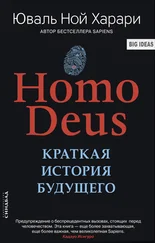In the last few decades we have at last made some real progress as far as the human condition is concerned, with the reduction of famine, plague and war. Yet the situation of other animals is deteriorating more rapidly than ever before, and the improvement in the lot of humanity is too recent and fragile to be certain of.
Moreover, despite the astonishing things that humans are capable of doing, we remain unsure of our goals and we seem to be as discontented as ever. We have advanced from canoes to galleys to steamships to space shuttles – but nobody knows where we’re going. We are more powerful than ever before, but have very little idea what to do with all that power. Worse still, humans seem to be more irresponsible than ever. Self-made gods with only the laws of physics to keep us company, we are accountable to no one. We are consequently wreaking havoc on our fellow animals and on the surrounding ecosystem, seeking little more than our own comfort and amusement, yet never finding satisfaction.
Is there anything more dangerous than dissatisfied and irresponsible gods who don’t know what they want?
1 An Animal of No Significance
1Ann Gibbons, ‘Food for Thought: Did the First Cooked Meals Help Fuel the Dramatic Evolutionary Expansion of the Human Brain?’, Science 316:5831 (2007), 1,558–60.
2 The Tree of Knowledge
1Robin Dunbar, Grooming, Gossip and the Evolution of Language (Cambridge, Mass.: Harvard University Press, 1998).
2Frans de Waal, Chimpanzee Politics: Power and Sex among Apes (Baltimore: Johns Hopkins University Press, 2000); Frans de Waal, Our Inner Ape: A Leading Primatologist Explains Why We Are Who We Are (New York: Riverhead Books, 2005); Michael L. Wilson and Richard W. Wrangham, ‘Intergroup Relations in Chimpanzees’, Annual Review of Anthropology 32 (2003), 363–92; M. McFarland Symington, ‘Fission-Fusion Social Organization in Ateles and Pan, International Journal of Primatology 11:1 (1990), 49; Colin A. Chapman and Lauren J. Chapman, ‘Determinants of Groups Size in Primates: The Importance of Travel Costs’, in On the Move: How and Why Animals Travel in Groups , ed. Sue Boinsky and Paul A. Garber (Chicago: University of Chicago Press, 2000), 26.
3Dunbar, Grooming, Gossip and the Evolution of Language , 69–79; Leslie C. Aiello and R. I. M. Dunbar, ‘Neocortex Size, Group Size, and the Evolution of Language’, Current Anthropology 34:2 (1993), 189. For criticism of this approach see: Christopher McCarthy et al., ‘Comparing Two Methods for Estimating Network Size’, Human Organization 60:1 (2001), 32; R. A. Hill and R. I. M. Dunbar, ‘Social Network Size in Humans’, Human Nature 14:1 (2003), 65.
4Yvette Taborin, ‘Shells of the French Aurignacian and Perigordian’, in Before Lascaux: The Complete Record of the Early Upper Paleolithic , ed. Heidi Knecht, Anne Pike-Tay and Randall White (Boca Raton: CRC Press, 1993), 211–28.
5G. R. Summerhayes, ‘Application of PIXE-PIGME to Archaeological Analysis of Changing Patterns of Obsidian Use in West New Britain, Papua New Guinea’, in Archaeological Obsidian Studies: Method and Theory , ed. Steven M. Shackley (New York: Plenum Press, 1998), 129–58.
3 A Day in the Life of Adam and Eve
1Christopher Ryan and Cacilda Jethá, Sex at Dawn: The Prehistoric Origins of Modern Sexuality (New York: Harper, 2010); S. Beckerman and P. Valentine (eds.), Cultures of Multiple Fathers. The Theory and Practice of Partible Paternity in Lowland South America (Gainesville: University Press of Florida, 2002).
2Noel G. Butlin, Economics and the Dreamtime: A Hypothetical History (Cambridge: Cambridge University Press, 1993), 98–101; Richard Broome, Aboriginal Australians (Sydney: Allen & Unwin, 2002), 15; William Howell Edwards, An Introduction to Aboriginal Societies (Wentworth Falls, NSW: Social Science Press, 1988), 52.
3Fekri A. Hassan, Demographic Archaeology (New York: Academic Press, 1981), 196–9; Lewis Robert Binford, Constructing Frames of Reference: An Analytical Method for Archaeological Theory Building Using Hunter-Gatherer and Environmental Data Sets (Berkeley: University of California Press, 2001), 143.
4Brian Hare, The Genius of Dogs: How Dogs Are Smarter Than You Think (Dutton: Penguin Group, 2013).
5Christopher B. Ruff, Erik Trinkaus and Trenton W. Holliday, ‘Body Mass and Encephalization in Pleistocene Homo’, Nature 387 (1997), 173–6; M. Henneberg and M. Steyn, ‘Trends in Cranial Capacity and Cranial Index in Subsaharan Africa During the Holocene’, American Journal of Human Biology 5:4 (1993): 473–9; Drew H. Bailey and David C. Geary, ‘Hominid Brain Evolution: Testing Climatic, Ecological and Social Competition Models’, Human Nature 20 (2009): 67–79; Daniel J. Wescott and Richard L. Jantz, ‘Assessing Craniofacial Secular Change in American Blacks and Whites Using Geometric Morphometry’, in Modern Morphometrics in Physical Anthropology: Developments in Primatology: Progress and Prospects , ed. Dennis E. Slice (New York: Plenum Publishers, 2005), 231–45.
6Nicholas G. Blurton Jones et al., ‘Antiquity of Postreproductive Life: Are There Modern Impacts on Hunter-Gatherer Postreproductive Life Spans?’, American Journal of Human Biology 14 (2002), 184–205.
7Kim Hill and A. Magdalena Hurtado, Aché Life History: The Ecology and Demography of a Foraging People (New York: Aldine de Gruyter, 1996), 164, 236.
8Ibid., 78.
9Vincenzo Formicola and Alexandra P. Buzhilova, ‘Double Child Burial from Sunghir (Russia): Pathology and Inferences for Upper Paleolithic Funerary Practices’, American Journal of Physical Anthropology 124:3 (2004), 189–98; Giacomo Giacobini, ‘Richness and Diversity of Burial Rituals in the Upper Paleolithic’, Diogenes 54:2 (2007), 19–39.
10I. J. N. Thorpe, ‘Anthropology, Archaeology and the Origin of Warfare’, World Archaeology 35:1 (2003), 145–65; Raymond C. Kelly, Warless Societies and the Origin of War (Ann Arbor: University of Michigan Press, 2000); Azar Gat, War in Human Civilization (Oxford: Oxford University Press, 2006); Lawrence H. Keeley, War before Civilization: The Myth of the Peaceful Savage (Oxford: Oxford University Press, 1996); Slavomil Vend, ‘Stone Age Warfare’, in Ancient Warfare: Archaeological Perspectives , ed. John Carman and Anthony Harding (Stroud: Sutton Publishing, 1999), 57–73.
4 The Flood
1James F. O’Connel and Jim Allen, ‘Pre-LGM Sahul (Pleistocene Australia – New Guinea) and the Archaeology of Early Modern Humans’, in Rethinking the Human Revolution: New Behavioural and Biological Perspectives on the Origin and Dispersal of Modern Humans , ed. Paul Mellars, Ofer Bar-Yosef, Katie Boyle (Cambridge: McDonald Institute for Archaeological Research, 2007), 395–410; James F. O’Connel and Jim Allen, ‘When Did Humans First Arrive in Greater Australia and Why is it Important to Know?’, Evolutionary Anthropology 6:4 (1998), 132–46; James F. O’Connel and Jim Allen, ‘Dating the Colonization of Sahul (Pleistocene Australia – New Guinea): A Review of Recent Research’, Journal of Radiological Science 31:6 (2004), 835–53; Jon M. Erlandson, ‘Anatomically Modern Humans, Maritime Voyaging and the Pleistocene Colonization of the Americas’, in The First Americans: The Pleistocene Colonization of the New World , ed. Nina G. Jablonski (San Francisco: University of California Press, 2002), 59–60, 63–4; Jon M. Erlandson and Torben C. Rick, ‘Archaeology Meets Marine Ecology: The Antiquity of Maritime Cultures and Human Impacts on Marine Fisheries and Ecosystems’, Annual Review of Marine Science 2 (2010), 231–51; Atholl Anderson, ‘Slow Boats from China: Issues in the Prehistory of Indo-China Seafaring’, Modern Quaternary Research in Southeast Asia 16 (2000), 13–50; Robert G. Bednarik, ‘Maritime Navigation in the Lower and Middle Paleolithic’, Earth and Planetary Sciences 328 (1999), 559–60; Robert G. Bednarik, ‘Seafaring in the Pleistocene’, Cambridge Archaeological Journal 13:1 (2003), 41–66.
Читать дальше
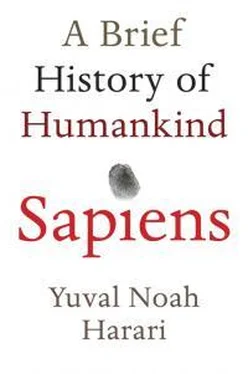
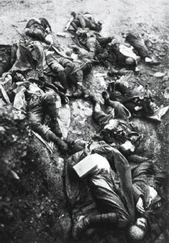

![Юваль Ной Харари - Sapiens. Краткая история человечества [litres]](/books/34310/yuval-noj-harari-sapiens-kratkaya-istoriya-cheloveche-thumb.webp)
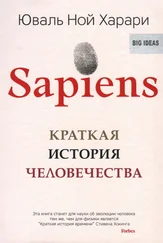

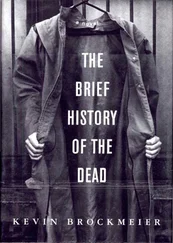

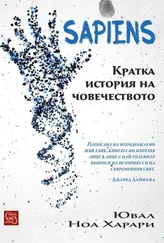
![Юваль Ной Харари - 21 урок для XXI века [Версия с комментированными отличиями перевода]](/books/412481/yuval-noj-harari-21-urok-dlya-xxi-veka-versiya-s-ko-thumb.webp)
